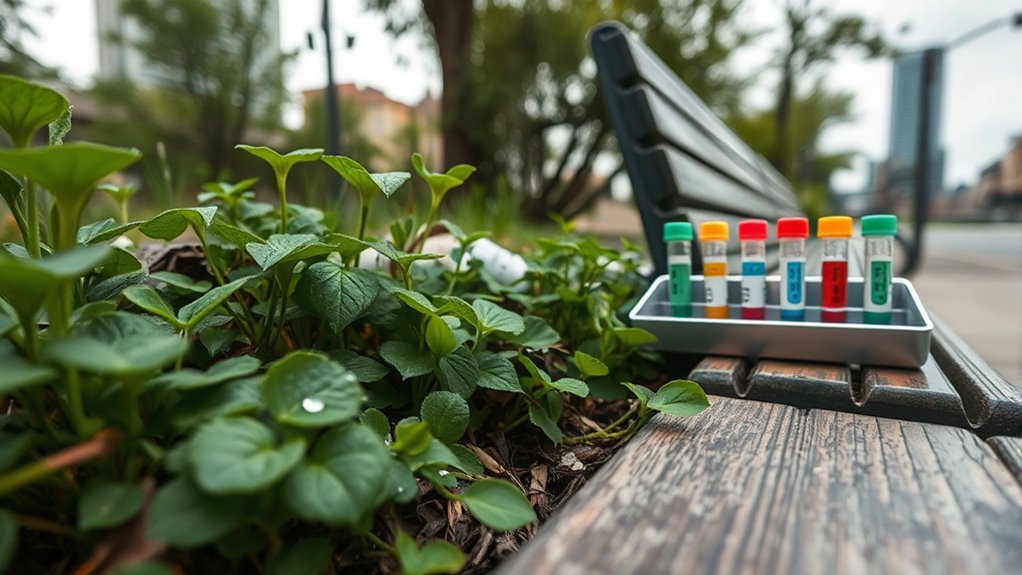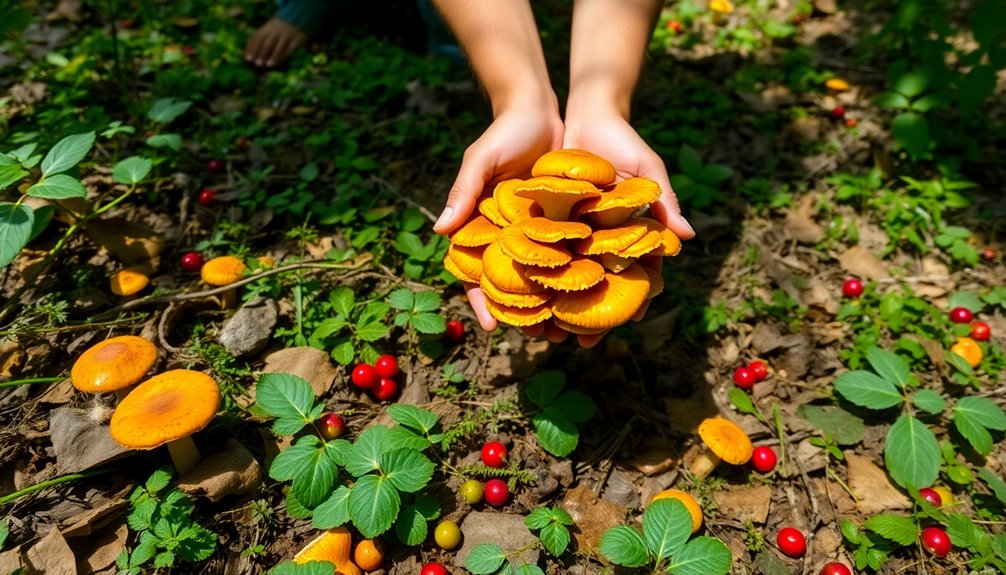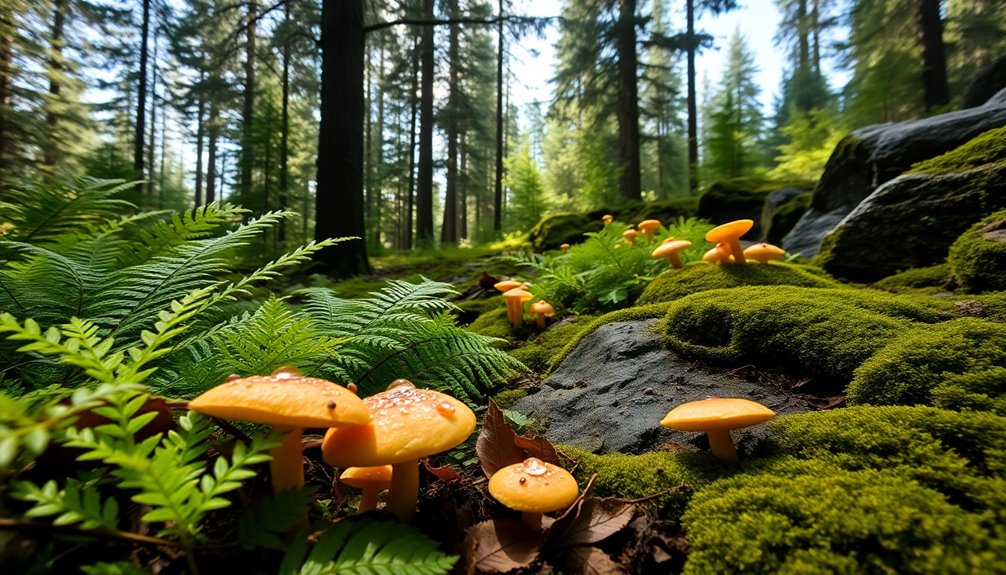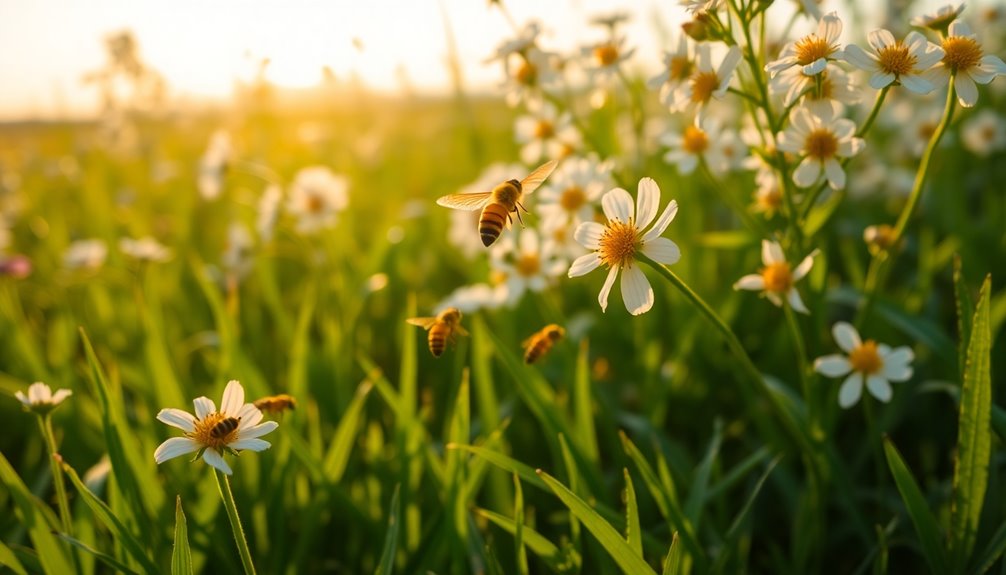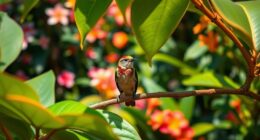When urban foraging, you should be aware of pollution risks from contaminated soil and airborne toxins that can settle on plants. Soil testing helps identify heavy metals like lead or pesticides, while air quality checks reveal pollution levels in your area. Using clean soil or raised beds can reduce hazards. Staying informed about environmental testing options guarantees safer foraging, and if you keep exploring, you’ll discover more ways to protect yourself and enjoy wild edible plants safely.
Key Takeaways
- Conduct soil tests in urban areas, especially near roads or industrial sites, to detect heavy metals and toxins before foraging.
- Use air quality monitoring data to identify cleaner neighborhoods and times for safer urban foraging.
- Consider testing indoor air quality if foraging near indoor environments or parks to prevent airborne pollutant exposure.
- Use raised beds with clean soil for growing edible plants in contaminated urban areas as a safer alternative.
- Review and interpret soil and air testing results to make informed decisions and avoid harvesting in polluted zones.
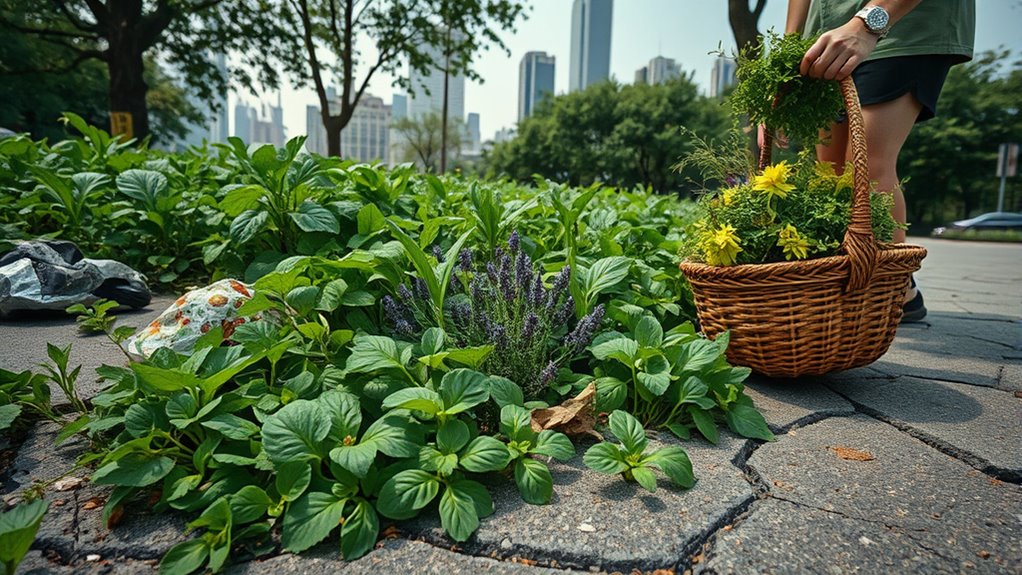
Have you ever considered that your city streets and parks might be treasure troves of edible plants? The idea of foraging in urban spaces is empowering—taking control of your food sources and reconnecting with nature amidst concrete. But before you dive in harvesting wild greens or berries, it’s essential to understand the potential pollution risks lurking beneath the surface. Urban environments often hide soil contamination, which can include heavy metals like lead or cadmium, pesticides, and other toxins from past industrial activity or vehicular emissions. These pollutants settle into the soil over time, making some plants unsafe to eat if you don’t take precautions.
That’s where soil contamination awareness becomes crucial. Before harvesting, it’s wise to check whether the area has been tested for pollutants. Soil testing can reveal if harmful substances have accumulated, especially in spots near busy roads, old factories, or construction sites. If tests indicate contamination, it’s best to avoid planting or foraging there, or to consider growing edible plants in raised beds with clean soil. The goal is to liberate yourself from hidden toxins, not to unknowingly introduce them into your body.
Alongside soil concerns, air quality testing plays a vital role in assessing urban foraging safety. Pollutants like particulate matter, nitrogen dioxide, or volatile organic compounds can settle on leaves and fruits, contaminating what you plan to eat. Monitoring air quality helps you identify cleaner spots where plants are less exposed to airborne toxins. Urban air testing isn’t complicated; many cities offer resources or data sets that show pollution levels by neighborhood. Using this information, you can select foraging locations with better air quality, reducing your exposure to harmful particles and chemicals.
Liberation from urban pollution isn’t about blind foraging; it’s about being informed and proactive. By understanding soil contamination risks, you gain the power to avoid unsafe areas and protect your health. Conducting or reviewing soil and air quality testing results allows you to confidently identify spots that truly offer safe, edible wild plants. This knowledge transforms foraging from a reckless gamble into a conscious act of empowerment. You reclaim your right to nourish yourself with nature’s free, wild bounty—without fear of ingesting toxins. Ultimately, it’s about trusting your environment and making smart choices, so you can enjoy the liberating experience of urban foraging while safeguarding your well-being. Regularly monitoring indoor air quality is also beneficial if you’re foraging near indoor environments or urban parks, ensuring that you aren’t exposed to elevated levels of pollutants that settle on plants.
Frequently Asked Questions
Are There Legal Restrictions on Urban Foraging in Cities?
You should know that there are often legal restrictions on urban foraging, and you might need foraging permits to do it legally. Cities aim to protect public health and private property, so check local laws before you gather wild edibles. Don’t let regulations hold you back—just stay informed and obtain necessary permits, so you can freely enjoy urban foraging while respecting the rules.
How Can I Identify Safe Plants to Forage?
You can identify safe plants by honing your plant identification skills and looking for contamination indicators like unusual smells, discoloration, or slimy textures. Trust your intuition and use reliable field guides or apps to recognize edible species. Stay vigilant for signs of pollution, such as chemical residues or trash nearby. Remember, only forage plants you’re confident in, and when unsure, consult local experts to ensure your foraging is secure and liberating.
What Are the Signs of Plant Contamination?
You’ll notice plant toxin symptoms like discoloration, wilting, or unusual spots, which are clear contamination indicators. If leaves have a strange texture, smell strange, or show signs of mold, avoid them. Be vigilant for signs of chemical residues, such as a sticky or greasy surface. Trust your senses—any abnormal appearance or scent suggests contamination, and you should liberate those plants from your foraging list to stay safe and healthy.
Can Urban Soil Testing Determine Pollution Levels?
Yes, urban soil testing can determine pollution levels. You can use various testing methods, like soil sampling and lab analysis, to identify contaminants like heavy metals or chemicals. This knowledge empowers you to forage safely and avoid areas with soil contamination. By testing soil, you take control of your environment, ensuring your urban foraging experience is both rewarding and safe, freeing you from potential health risks.
Are There Community Resources for Safe Urban Foraging?
Ever wondered where to find trusted urban foraging resources? You can tap into community gardens and join foraging workshops, which often offer guidance on safe gathering spots and sustainable harvesting. These community resources empower you to reclaim your food sovereignty and explore urban bounty safely. Why settle for uncertainty when you can learn directly from local experts? Immerse yourself in these opportunities and foray into urban nature with confidence and liberation.
Conclusion
As you explore urban foraging, remember that pollution risks are real—studies show over 70% of city-grown produce can carry contaminants. Testing options like soil and plant analysis help keep you safe while enjoying wild edibles. Staying informed and cautious guarantees you reap the benefits of urban foraging without risking your health. So, before you dig in, take those extra steps—your well-being is worth it in this vibrant, city-grown world.

